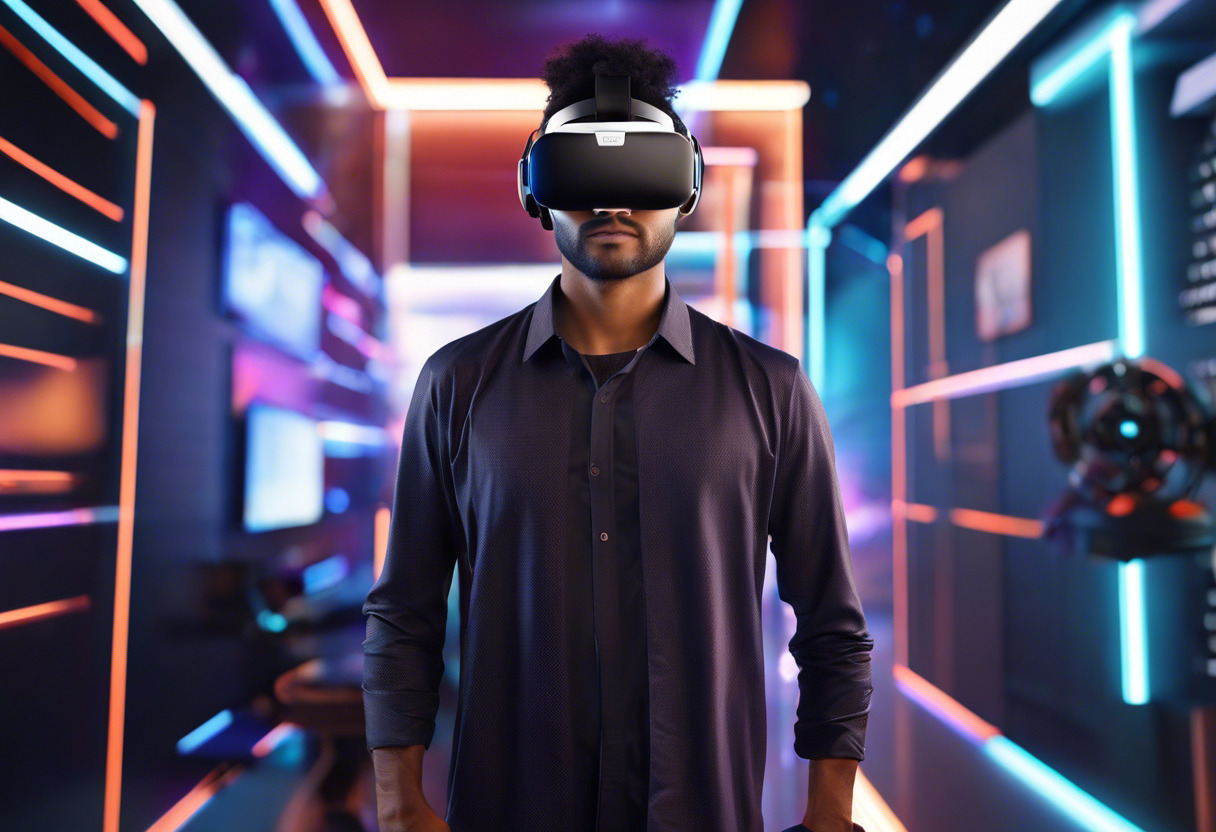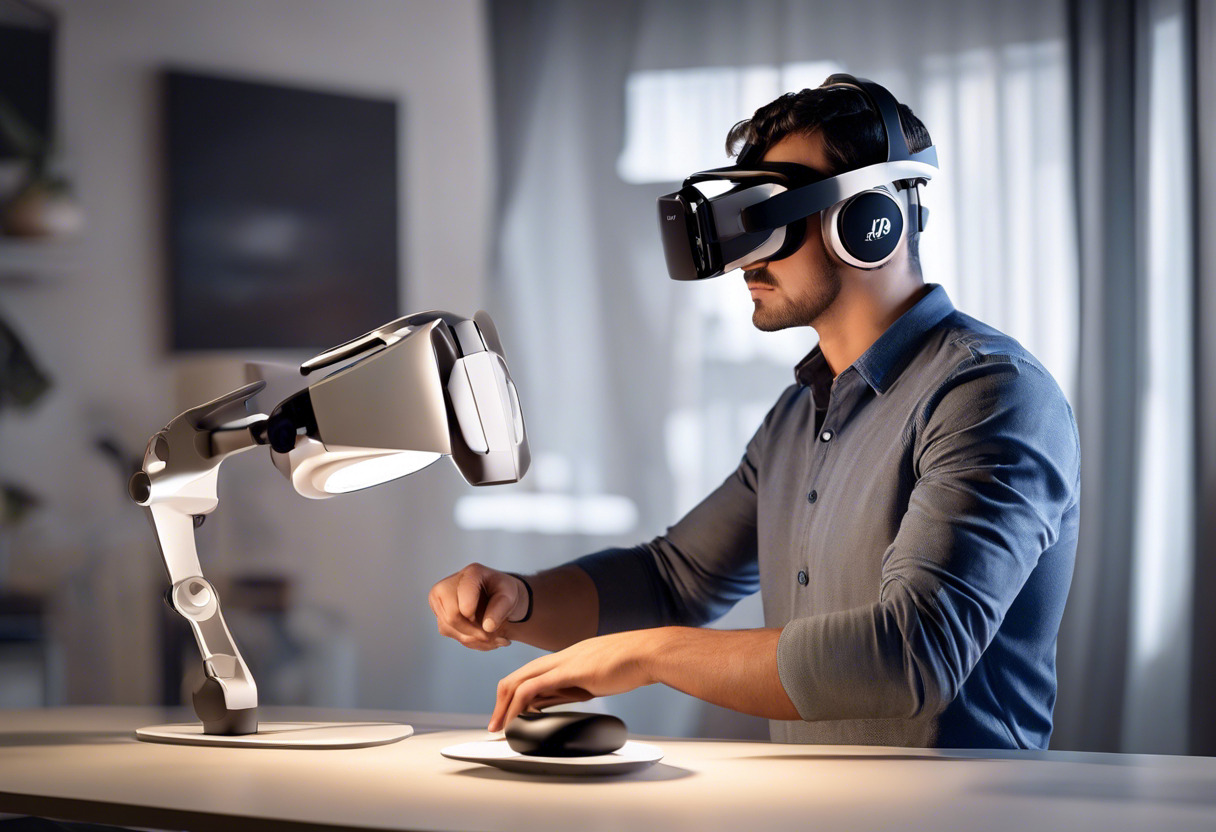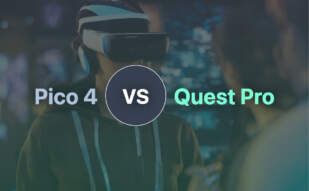The Quest 2 stands out for its expansive game library and high refresh rates, perfect for gaming enthusiasts. However, for businesses seeking a lighter, ergonomic device with robust specs, the Pico 4 Enterprise provides comfort and impressive visualization capabilities.

Key Differences Between Pico 4 and Quest 2:
- Design: Pico 4’s design emphasizes comfort with a weight distribution focus; Quest 2 is lighter overall.
- Price: Quest 2 is more affordable. Pico 4 offers an enterprise variant with better specs at a higher price.
- Hardware: Both feature the Snapdragon XR2, but Pico 4 offers more RAM and automatic interpupillary distance adjustment.
- Experience: Quest 2’s established store offers more games. Pico 4 compensates with superior visual performance.
| Comparison | Pico 4 | Meta Quest 2 |
|---|---|---|
| Initial Release | 2022 | October 13, 2020 |
| Operating System | PICO OS 5.0 | Android-based Quest system software, current version Android 12.1 |
| Processor | Qualcomm Snapdragon XR2 | Qualcomm Snapdragon XR2 |
| Memory | 8GB LPDDR4 | 6GB LPDDR4X |
| Display | 2 Fast-LCD displays, over 2K resolution per eye | RGB LCD; 1832 x 1920 per eye |
| Sound | 360° stereo speakers with 3D spatial sound | 2 built in speakers, 3.5mm headphone jack |
| Tracking | SLAM omnidirectional positioning system | 6DOF inside-out tracking via four in-built cameras and two controllers |
| Price | €429 | $299 for 64 GB, $399 for 256 GB |
| Weight (Without Strap) | 295g | 503g |
| Design Philosophy | Balance and comfort with emergent ergonomics | Lightweight with updated high specs |
| Unique Features | Automatic interpupillary distance adjustment and Pancake lenses for weight reduction and image quality improvements | Can operate standalone or with Oculus Rift-compatible VR software running on a desktop computer |
What Is Pico 4 VR Headset and Who’s It For?
ByteDance rolled out the Pico 4 VR headset in 2022 as a comfortable, immersive VR solution. The Pico 4 is sleek yet impactful, offering seamless operations with Qualcomm Snapdragon XR2 and 8GB LPDDR4 RAM. Its target audience encompasses both regular VR enthusiasts as well as businesses, with the Enterprise variant being specifically designed for the latter demographic.

Pros of Pico 4 VR Headset
- Ergonomic design promotes comfort
- Pancake lenses contribute to image quality
- Access to a good performance-price ratio, as highlighted by PC Gamer review.
Cons of Pico 4 VR Headset
- Reduced field of view due to Pancake lenses
- Limited game library as pointed by NookGaming
What Is Quest 2 VR Headset and Who’s It For?
Developed by Reality Labs, a division of Meta Platforms, Quest 2 is a VR headset engineered for the next-generation VR experience. It came into the market as Oculus Quest 2 but was rebranded to Meta Quest 2 in 2022. It is aimed at typical VR users seeking a standalone or PC-based VR experience, also open to users aged 10+ with Meta accounts.

Pros of Quest 2 VR Headset
- Improved controller, supports hand tracking
- Higher refresh rate and per-eye resolution
- Offers a myriad of VR games and experiences on Quest Store.
Cons of Quest 2 VR Headset
- Short battery life, lasting 2-3 hours between charges
- No room for storage expansion
Pico 4 vs Quest 2: Pricing
The Pico 4 is slightly more expensive, available for €429 (around $475 based on current exchange rates), while the Quest 2 ranges from $299 for the 64 GB model to $399 for the 256 GB model.
Pico 4
The Pico 4 VR headset by ByteDance is listed at €429 on retail platforms like Amazon and XRshop. Though it comes with high-end features and specifications like Qualcomm Snapdragon XR2, 8GB LPDDR4 RAM, and high resolution Fast-LCD displays, its price point places it on the higher end of the market.
Quest 2
The Quest 2 VR headset, developed by Meta Platforms’ Reality Labs, has an entry price point of $299 for the 64 GB model. For those in need of more internal storage, the 256 GB model is available for $399. This price range, coupled with its features like the Qualcomm Snapdragon XR2 processor and high refresh rate displays, gives it a competitive position in the market.
Choosing the Victor: Pico 4 or Quest 2?
With immense competition in the VR tech arena, choosing between Pico 4 and Quest 2 demands comprehensive audience-led evaluation.
VR Enthusiasts
The small but mighty Pico 4 is perfect for these hobbyists. Its comfort, impressive image quality, and competitive price make it an excellent introduction to the AR/VR world. However, for a more enriched library of games and experiences, Quest 2 would be the preferred choice.

Developers & Designers
Quest 2, with its robust OS and excellent display, is a developer’s best choice. Along with a more extensive Quest Store as a platform for content, it also boasts progressive refresh rates of up to 120Hz and seamless integration with desktop VR software.

Businesses & Industries
For industries requiring high-performance VR experiences, the Pico 4 Enterprise variant is undeniably geared for commercial operations. Its superior LPDDR5 RAM, vivid 2K resolution per eye, and motorized automattic interpupillary distance adjustment make it an enterprise-worthy tool.

In the quest for the ultimate VR experience, both Pico 4 and Quest 2 prove to be heavyweights. However, for a compact, comfortable yet powerful solution, Pico 4 steals the limelight. Conversely, for a more diverse content landscape and advanced development capabilities, Quest 2 stands tall.
Tiffany Brise
Content writer @ Aircada, patiently awaiting a consumer AR headset that doesn’t suck.





